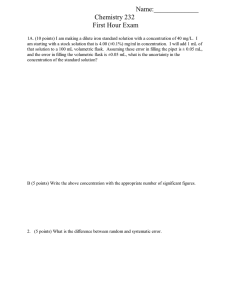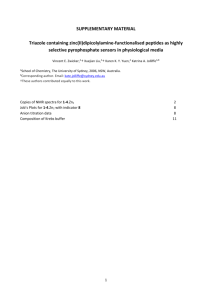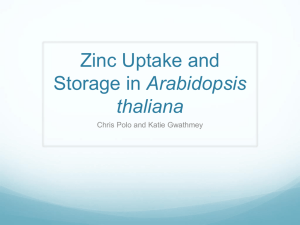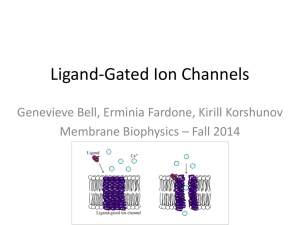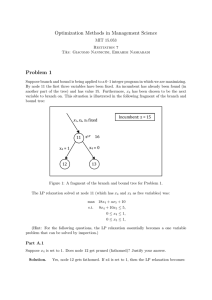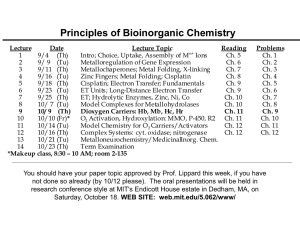1. dia
advertisement
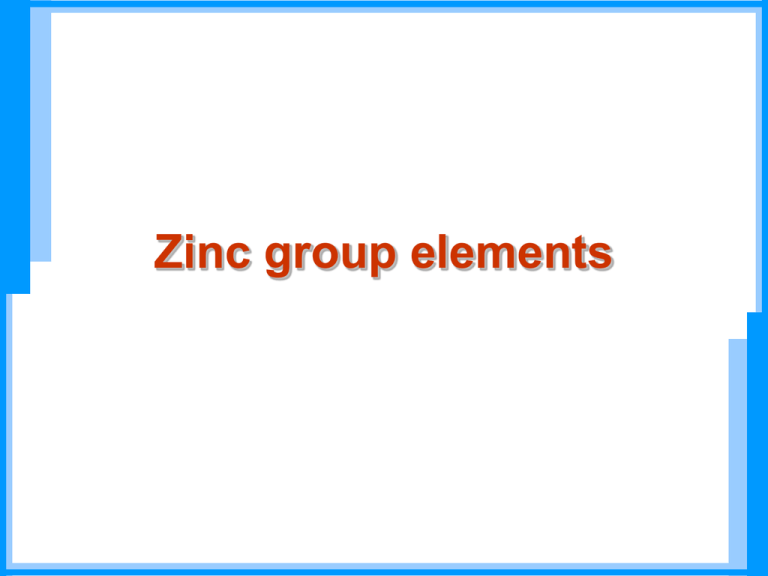
Zinc group elements Periodic Table bulk elements for some species trace elements Fe, Cu, Mo: Electron-transfer Redox proteins and enzymes Oxygen carrying proteins Nitrogen fixation Zn: Metalloenzymes Structure promoters Lewis acid Not a redox catalyst! Other metal ions: less well defined and more obscure roles Terrestrial distribution: Zn Cd Hg (relatively low conc.) Distribution in vivo: Zn In human being: ~ 2 g Zn2+ • ~ 25-30 % in skin and bones • ~ 50 % in the blood ~ 12-20 % plasma ~ 75-80 % erythrocytes ~ 3 % leucocytes • Pancreas (b-cells) • eye Role of Zn2+ : deficiency: • disturbances of repr. system • dwarfism • skin lesions • skeletal abnormalities Proteins associated with Zn: 1. Helical: insulin, phospholipase 2. b-sheet: carbonic anhydrase superoxide dismutase 3. Mixed: carboxypeptidase alcohol dehydrogenase 4. Random: metallothioneins: Zn2+, Cd2+, Hg2+ (Cys – X – Cys)7 x=nonaromatic amino acid Zn – metalloenzymes: 80! Zn activated enzymes: 20! (H2O)(1-2) N S (H2O)(1-2) Zn O Zn N C O S(N) S(N) Zn N S S S Function of Zn in metalloenzymes 1. Structure-promoter 2. Substrate binder 3. Lewis acid ad. 1. ad. 2. reactions catalyzed by Zn- metalloenzymes: hydrolysis of – esters – amides – peptides e.g. OH R C O R’ + OH- R ad 3. Zn2+ (H2O) O O(-) O Zn2+ C Zn2+ Zn2+(OH-) + H+ R’ H His His O O(-) His Zn2+ C O H His His His O = C = O + OH- O O Zn2+ C O(-) HCO3- Cd2+ (toxic): Interferes with: Zn2+ , Fe2+ metabolism Cumulates in: kidney liver seminiferous tubules (kills the spermatozoa) Hg – Hg(l) non toxic! – Hg(g) TOXIC – Hg2+(aq) TOXIC Alkyl and aryl mercury toxic Al3+ – Low availability (insoluble ~ pH 7) – Ox. State: +3 (no redox reaction) – Alzheimer’s disease: presenile dementia Alumino-silicate plaques Ga3+, In3+: moderately toxic TI3+, TI+: extremely toxic Pb2+, Pb4+: distinctly toxic Cumulative effect! Intake: ~ 300 mg/day Pipe: Pb (HCO3)2 Plants accumulate Lead pollution: exhaust emission Pb(C2H5)4 Inhibits the biosynthesis of hem!
